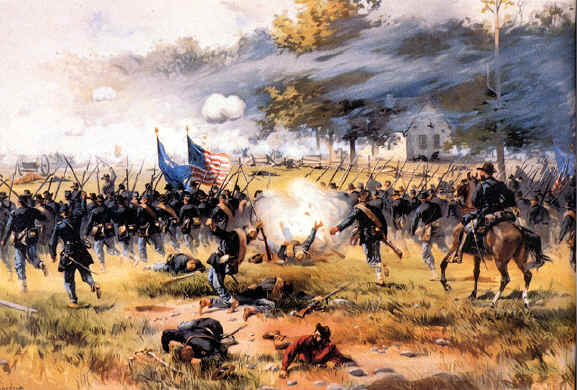
The Flags of the Iron Brigade
By Howard Michael Madaus and Richard Zeitlin
Republished from Wisconsin Magazine of History, Vol. 69, No. 1, Autumn, 1985
A publication of the State Historical Society of Wisconsin
and with their gracious permission
It is available in a printed expanded version with full footnotes from the bookstore of
The Wisconsin Veterans Museum
(they can be reached through our links page and the booklet cost is quite nominal)
PREFATORY NOTE
Nearly 3 million men served in the Union Army during
the Civil War, 1861-1865.
Of these, some 5,000 men filled the ranks of the Iron Brigade, which was made up of the Second, Sixth, and Seventh Wisconsin, the Nineteenth Indiana, and the Twenty-Fourth Michigan Volunteer Infantry Regiments. As the only “all Western” unit in President Abraham Lincoln’s Army of the Potomac, the Iron Brigade compiled an unsurpassed record of bravery and sacrifice. No brigade in the Union Army suffered a higher percentage of combat fatalities, and the Second Wisconsin sustained the highest percentage of fatal casualties among the 3,559 Union regiments in the war.
The training, leadership, and morale of the officers and men of the Iron Brigade were conspicuous at Gainesville, South Mountain, Antietam, Gettysburg, and a dozen other battles and skirmishes. “At such places, and on more than one occasion,” recalled one of their commanders,
“brave men died to keep their flags aloft. “
Always the flags were in the forefront of battle,
proudly displayed, tenaciously defended.
In a day when soldiers entered battle to the sounds of fife and drum, the regimental colors came to represent, as few tangible
objects could, the very ideal of the Union.
How the flags of the Iron Brigade came to be, and what purposes they served both during and after the war, is the topic of this two-part article.